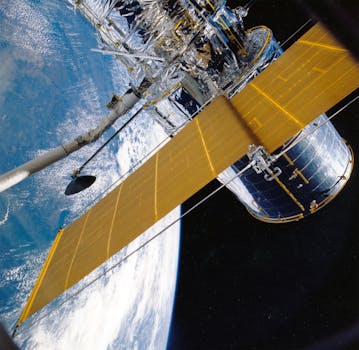
The Future of Satellites: Revolutionizing Global Communication and Exploration
The future of satellites is rapidly evolving, with advancements in technology and innovation, satellites are becoming increasingly important for global communication, navigation, and exploration. The future of satellites holds much promise, with new technologies and applications being developed, such as satellite constellations, satellite-based internet, and satellite-based Earth observation. In this article, we will explore the future of satellites and how they are revolutionizing global communication and exploration.
Satellites have been a crucial part of modern technology for decades, providing a range of services including television broadcasting, telecommunications, navigation, and weather forecasting. However, the future of satellites is set to be even more exciting, with the development of new technologies and applications. One of the most significant advancements in satellite technology is the development of satellite constellations. These are groups of satellites that work together to provide global coverage and are being used for a range of applications, including satellite-based internet and Earth observation.
Advancements in Satellite Technology
There have been many advancements in satellite technology in recent years, including the development of smaller, more efficient satellites, and the use of new materials and propulsion systems. One of the most significant advancements is the development of reusable rockets, which are capable of launching satellites into space and then returning to Earth, reducing the cost of access to space. This has made it possible for companies to launch constellations of satellites, which are being used for a range of applications, including satellite-based internet and Earth observation.
Another significant advancement is the development of satellite-based internet, which is being used to provide internet access to remote and underserved communities around the world. This is being achieved through the use of constellations of satellites in low Earth orbit, which are able to provide high-speed internet access to users on the ground. Companies such as SpaceX and OneWeb are leading the charge in this area, with plans to launch thousands of satellites in the coming years.
Applications of Satellites
Satellites have a wide range of applications, including global communication, navigation, and Earth observation. They are used for television broadcasting, telecommunications, and weather forecasting, and are also being used for more specialized applications, such as satellite-based internet and Earth observation. The use of satellites for Earth observation is becoming increasingly important, with applications including monitoring climate change, tracking natural disasters, and managing natural resources.
Satellites are also being used for navigation, with systems such as GPS and Galileo providing location information and timing signals to users on the ground. This is being used for a range of applications, including aviation, maritime, and land transportation, and is also being used for more specialized applications, such as precision agriculture and surveying.
Challenges and Opportunities
Despite the many advantages of satellites, there are also challenges and opportunities that need to be addressed. One of the biggest challenges is the issue of space debris, with thousands of pieces of junk in orbit around the Earth, posing a risk to operational satellites. This is being addressed through the development of new technologies and regulations, including the use of de-orbiting systems and the implementation of sustainable practices in space.
Another challenge is the issue of cybersecurity, with satellites being vulnerable to hacking and other forms of cyberattack. This is being addressed through the development of new security protocols and the implementation of best practices in cybersecurity. Despite these challenges, the future of satellites holds much promise, with new technologies and applications being developed, and new opportunities for innovation and investment.




